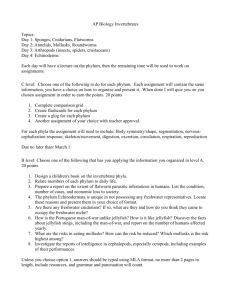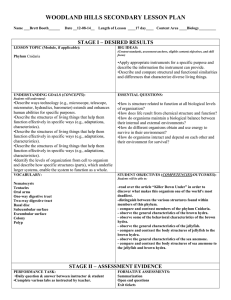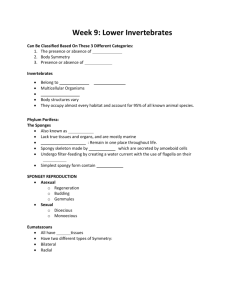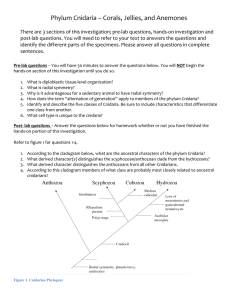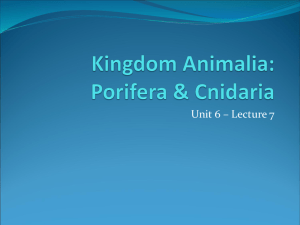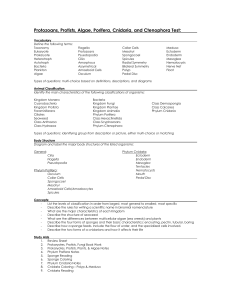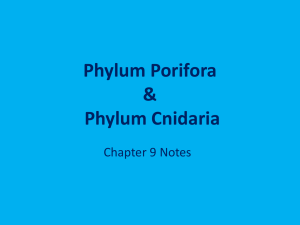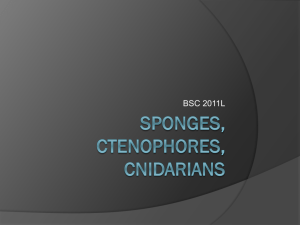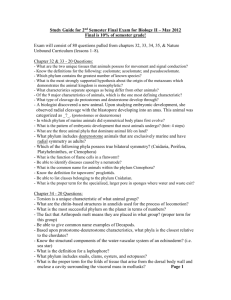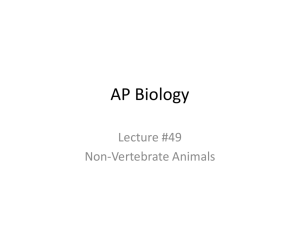The Animal Kingdom
advertisement
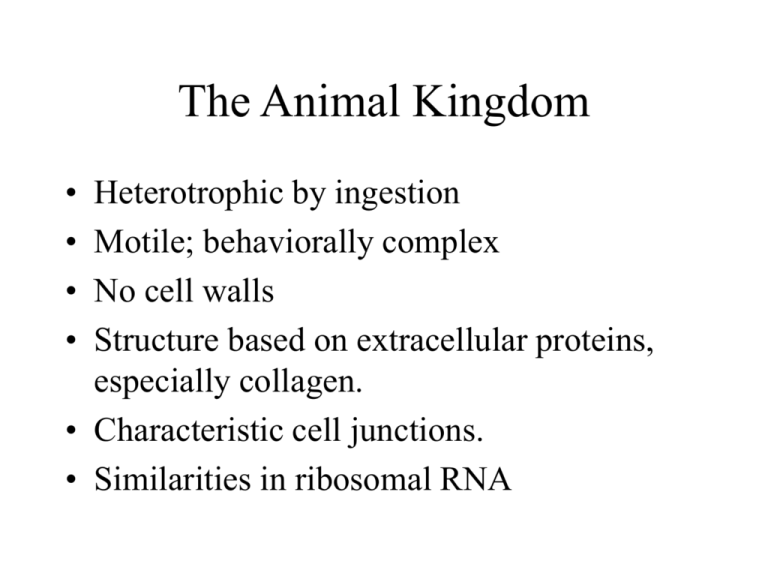
The Animal Kingdom • • • • Heterotrophic by ingestion Motile; behaviorally complex No cell walls Structure based on extracellular proteins, especially collagen. • Characteristic cell junctions. • Similarities in ribosomal RNA Evolutionary Trends in Body Plan • Symmetry: – None (sponges) – Radial (jellyfish, sea stars) – Bilateral (arthropods, vertebrates, etc.) • Cephalization: Evolution of a “head” with sensory and feeding organs. • Digestive system: – Ingestion into individual cells (sponges) – Gastrovascular cavity (blind sac) (jellyfish) – Digestive tract with mouth & anus (most other groups) • Body cavities: Evolution of a true coelom lined with peritoneum. Sponges – Phylum Porifera • Simple body plan. • Choanocytes beat their flagella to create water flow. • Amoeboid cells feed by endocytosis. • Also review pores, osculum, and spicules Phylum Cnidaria • Only two cell layers – acoelomate. • Gastrovascular cavity (blind gut): opening acts as mouth and anus. • Radial symmetry. • Polyp and medusa body forms. Classes of Cnidaria • Anthozoa: sea anemones and corals (lack medusa) • Hydrozoa: Hydra and Portuguese man-of-war (colonial) • Scyphozoa: jellyfish (medusa dominates life cycle) Portuguese Man-of-War Colonial hydrozoan, with stinging structures called nematocysts Phylum Ctenophora – comb jellies • Like Cnidaria but with a complete gut (mouth and anus) Protostomes vs. Deuterostomes • Protostomes: – blastopore becomes the mouth – ventral nerve cord(s) – worms, insects, etc. • Deuterostomes – blastopore becomes the anus – dorsal nerve cord – sea stars, vertebrates 2 main groups of protostomes • Lophotrochozoans – soft body, hydrostatic skeleton • Ecdysozoans – exoskeleton that molts Platyhelminthes – the flatworms • simplest lophotrochozoans • acoelomate • gastrovascular cavity Rotifers – small, structurally complex (complete digestive tract, ciliated structures) Phylum Brachiopoda • Marine animals with a 2-part shell, similar to bivalve mollusks. • But they are NOT mollusks – they have a lophophore (ring of tentacles around the mouth. • Few living species; diverse in the Paleozoic Annelida – segmented worms • True coelom • Segmented body • Soft flexible body wall. Mollusca – the mollusks • coelomate • bilaterally symmetrical • body plan based on – muscular structure called a “foot” – “visceral mass” – internal organs – “mantle” – covers the visceral mass; secretes shell Familiar mollusk groups • Bivalves: 2-part shell (clams, oysters) • Gastropods: snails, conchs, whelks, etc. • Cephalopods: octopus and squid (internal shell) Ecdysozoans – animals with exoskeletons or tough cuticle

